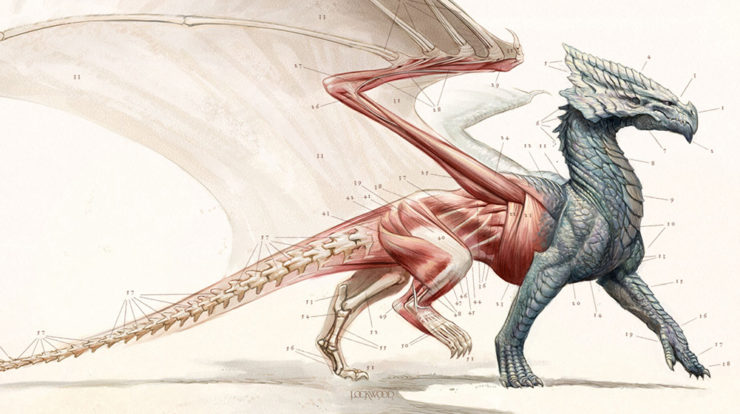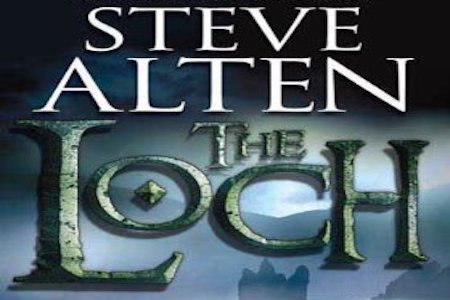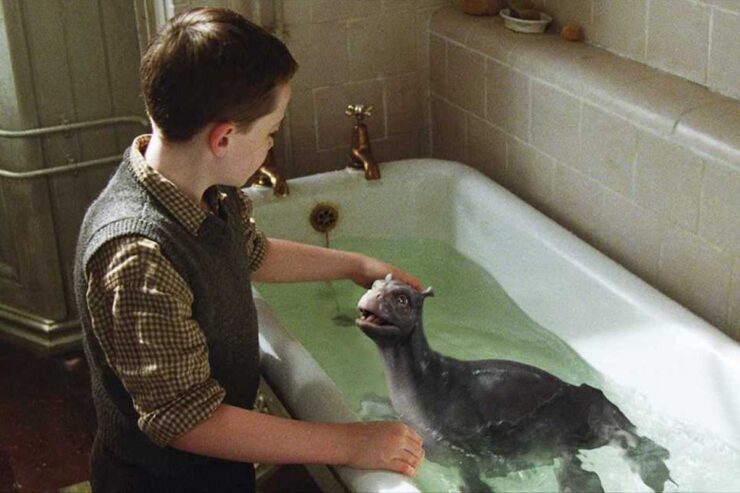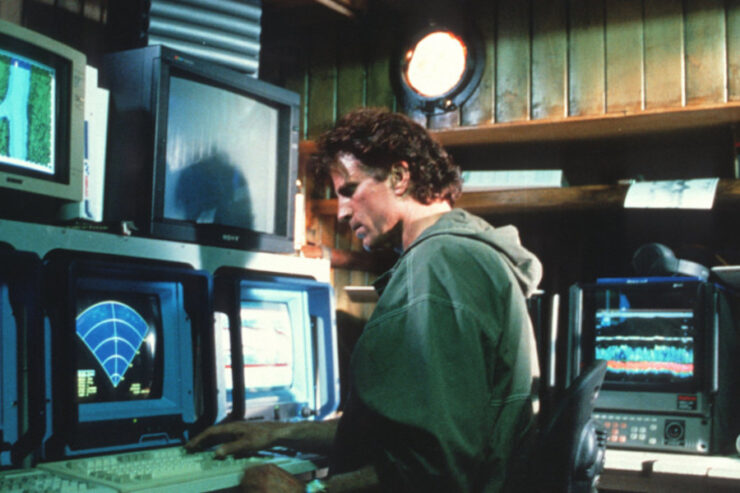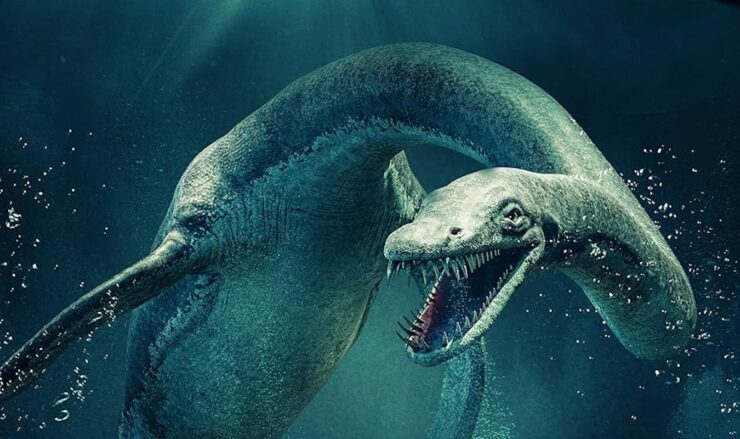I have a significant soft spot for nineteenth-century women adventurers, both historical and fictional. From Lady Anne Blunt to Amelia Peabody, I’m there for the character, and I’m intrigued by her story. Marie Brennan’s Lady Isabella Trent is a worthy addition to the company, with a very special bonus: dragons.
I have, so far, read only the first volume of the five. It’s very much a prologue, an introduction to the world and the protagonist, and it’s constructed as a memoir. The framing device of the much older Lady Trent looking back on her early life allows for a nice balance of reminiscence and immediate experience. We get to know the young Isabella as she lives through her various adventures, but we also get the perspective of the far wiser and more experienced older version.
It’s clear that this is meant to be a multi-volume series. What happens in this volume to a large extent is setup and introduction. Young Isabella is the only girl in a family of six children, brought up on a country estate in the secondary-world kingdom of Scirland.
Her aristocratic parents are quite conventional. Her mother adheres strictly to the role expected of a woman in upper-class society. Her father is somewhat remote and occasionally indulgent. All but one of her brothers are pretty much not in the picture; the one who is shares in and sometimes encourages her escapades.
Isabella does not fit well into the mold of the proper young female. All she wants out of life is to study dragons. She chafes at the tight restrictions on her physical and intellectual freedom, sometimes bursting out with unhappy results, as when she dresses up as a boy to join in the hunt for a dragon that has been preying on local livestock.
This episode causes her to be locked down for two years, until she can make her debut in the big city and, everyone hopes, hunt down and secure a suitably wealthy and respectable husband. During that time, she redirects her passion about dragons to the obsessive study of horses. But that’s purely a distraction from the tedium of life as a proper female. She has no real passion and little liking or understanding for the substitute species. It’s just a way of keeping her scientific skills in tune.
Buy the Book
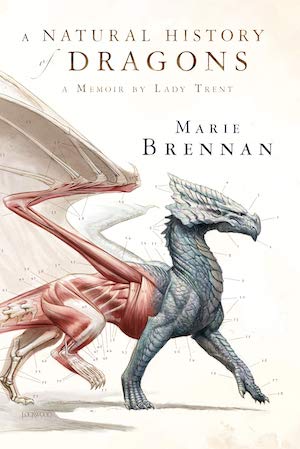

A Natural History of Dragons
As soon as she reaches her sixteenth birthday, she’s launched on society. Her father provides her with a list of six acceptable marital candidates, all of whom are notable for the quality and quantity of their libraries. Her father understands her very well.
And sure enough, one of those six turns out to be just the thing. She meets him in the dragon house of the royal menagerie, and finds him most congenial. They’re duly and properly married, and she begins what for most women would be the fulfillment of her destiny: to be a wife and mother.
But Isabella is meant for a different life. It takes a while to materialize; she suffers a tragic loss and a near-fatal depression. But luck and family connections introduce her to an elderly earl with a similar passion for dragons, and the means and the wherewithal to travel the world in search of them.
Isabella’s husband not only adores her, he’s amenable to manipulation—though she has to be careful; he doesn’t always miss the fact that she’s doing it. She manages to convince him that they should accompany the earl on an expedition to the vaguely Eastern European, somewhat Russian-adjacent country called Vystrana, to study a particular species of dragon.
Isabella’s adventures in Vystrana involve a great deal of miserable traveling, a lot of misery in a wretchedly poor town, a series of run-ins with smugglers and the local government, and the occasional encounter with a dragon. Most of the story is a mystery-thriller about smuggling (what and why) and political conflicts (Vystrana is a conquered state, with a non-native ruling class).
Isabella fights hard against the restrictions imposed on her by her gender. She’s not allowed to go out and hunt dragons, except in one or two notable instances. She spends most of her time in their lodgings, drawing maps and filing field notes. She’s not allowed to defend herself—to learn to fight or shoot—but must be protected by males at all times, except when she’s looked after by female servants.
That doesn’t slow her down much. References to her later life make it pretty clear that she’s going to break the chains of her female existence. In this early volume, she alternates between trying (or being forced) to be what she’s expected to be, and erupting in more or less open rebellion. She makes mistakes, some of them dangerous or fatal, and she doesn’t always clean up after herself.
She’s a great character. Complicated, headstrong, flawed. Outspoken and opinionated. And such a scientist. All she truly cares about is her obsession with dragons. Everything she does is aimed in that direction.
And yet the book suffers from a syndrome that in the Young Adult/teen romance world is sometimes referred to as “Too much boyfriend, not enough roller derby.” Not that this book does much with romance at all—from meeting Jacob to marrying him is the matter of a few paragraphs, and their relationship is more a sincere friendship than a passionate romance (and I actually love this about the book). What fills up most of the space in Isabella’s early life is chafing against her role as a well-to-do female, and in the Vystrana adventure is smugglers and politics. There’s a great deal of friction between the foreign intruders and the locals, and it seems the expedition still manages to carry on its study of dragons, but next to none of it shows up in the narrative.
At one point Isabella lists the things the men have done and discovered, including mating rituals and the locations of draconic lairs. But while all that is going on, Isabella is fixated on hating the town she’s in, struggling with the language, and trying to figure out what’s going on with the smugglers. When she hares off to an ancient ruin, instead of dragons she finds the smugglers’ empty storage cave.
Which pretty well sums up the book. Dragons are either pathetic, stunted things in a menagerie, which serve as a vehicle for the marriage plot, or monsters that have to be killed, which serve as a vehicle for the smuggling/political plot. There is a sense late in the narrative that there may be more to them, and Isabella may be one of the scientists who explores this. But for the time being, there’s too much people drama, not enough dragons.
I would hope that later volumes would remedy this, though I gather the second installment is equally focused on politics to the exclusion of an actual natural history of dragons. The Temeraire series does more of that, with more sense of its world’s draconic populations, their different varieties, habitats, and personalities. This series seems more interested in the human element, with dragons as a pretext for Isabella’s feminist rebellion. They’re key to the mystery of the smugglers and the local authorities, but they don’t play an active role. Mostly, they’re dead, and preserved in various media.
Isabella is, as I’ve said, a great character. She shares the stage with other well-drawn personalities as well—notably her husband Jacob and her maid Dragmira. I just wish there were more live dragons, and more plot that revolved around them. There are such tantalizing hints of what could be. If only it actually were.
Judith Tarr is a lifelong horse person. She supports her habit by writing works of fantasy and science fiction as well as historical novels, many of which have been published as ebooks. She’s written a primer for writers who want to write about horses: Writing Horses: The Fine Art of Getting It Right. She lives near Tucson, Arizona with a herd of Lipizzans, a clowder of cats, and a blue-eyed dog.










